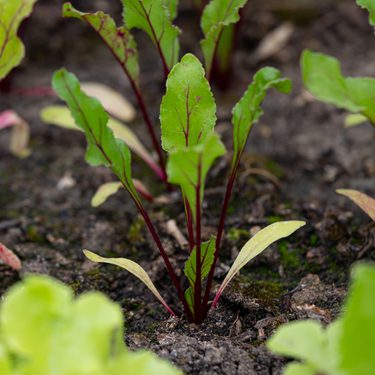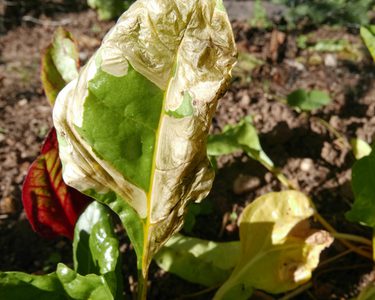
A survey of beet leaf miner
- Tags
- Members experiment archive
The experiment 🔗
In 2024, Garden Organic members carried out a survey of this increasingly common pest of chard and spinach.
Beet leaf miner (Pegomya hyoscyami) is a pest that causes unsightly trails on chard or beetroot leaves. In the past, it has been considered a nuisance that occasionally causes low level damage to chard or spinach. However, in recent years, it's been associated with causing higher levels of spoilage.
Garden Organic carried out a UK survey of beet leaf miner from March to November 2024. The aim was to identify where it was a problem, and which times of year, so gardeners had a better idea of when to take protective action such as covering their crops.
The key findings of the project were:
Around 25% of participants reported they had a moderate or severe problem with this pest.
As a general trend, there was more pest damage in the South-West and less in the North East and Scotland. Previous work has suggested the pest is more prevalent in the sugar beet growing areas of Suffolk and Norfolk, but we didn’t have enough data to show whether this still held true.
Participants observed egg laying and damage to the crops between the period of April to September.
If the problem is severe, we would recommend covering the crops with fine mesh between April and September, but in many cases, this would not be necessary. For milder cases, removing the affected leaves will help reduce the problem.
It’s recommended to put leaves in the green waste bin as home composting will not get hot enough to kill off the pest. The pest pupates over winter, so you risk spreading the pest further in following years by putting affected leaves in compost.
We would recommend repeating the survey in future years with a larger group of participants to improve on geographic specific information.
The methods of gathering data worked well, and sending monthly reminders to participants helped to achieve a good response rate of 71%.
